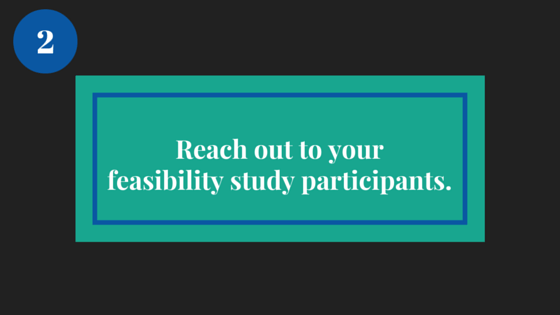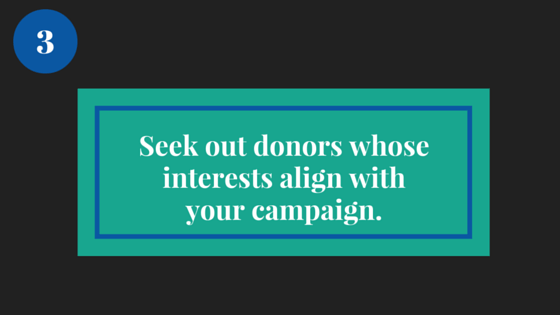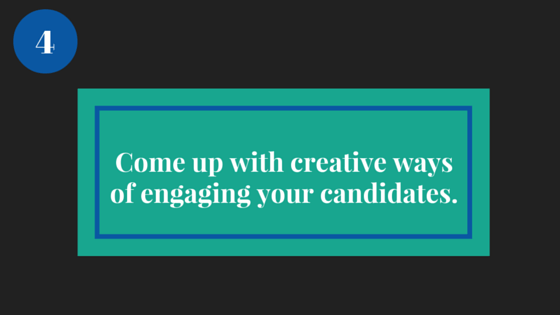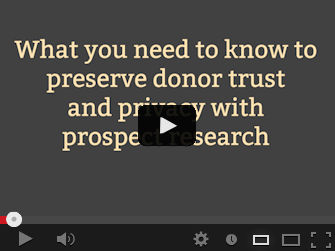Guest Post by Ryan Woroniecki, Vice President of Strategic Partnerships at DonorSearch
Before we dive headfirst into tips for finding major donors for a capital campaign, let’s briefly back up and discuss capital campaigns on the whole.
On a very general level, “A capital campaign is a combination of fundraising and outreach strategies that is designed to raise money for a specific need.”
On a more practical and concrete level, capital campaigns are most commonly associated with funding such projects as:
- Building renovations
- Purchasing pricey equipment and/or supplies
- Acquiring new land
- Fresh construction
- Adding to an endowment
- And other similar, large-scale endeavors
Needless to say, you can’t really think about organizing a capital campaign without having a strong system in place for securing major gifts. And that’s when you need prospect research.
This site is already brimming with excellent information about prospect research, so we’re not going to retread well-covered territory here.
Instead, we’re going to propose four key tips to help your organization find and cultivate major donors for your next capital campaign.
The four tips are as follows:
- Look to your annual fund.
- Reach out to your feasibility study participants.
- Seek out donors whose interests align with your campaign.
- Come up with creative ways of engaging your candidates.
Let’s get started.
1. Look to your annual fund.

For the first point on this list, we’re going back to the basics.
We know that past giving is the greatest indicator of future giving. In fact, DonorSearch’s research found that a donor who has made a gift between $5k-$10k to a nonprofit organization is 5 times as likely to donate in the future as an average person is.
That correlation trickles down to donors of all giving levels, including your annual fund.
As you embark on your campaign’s quiet phase and attempt to secure roughly 70% of your goal before going public with your efforts, you should start your search by looking inwards. The proof is in the data.
Loyal, annual fund donors might be just the prospects you’re looking for. Cross-reference your list of annual fund donors with databases that can clue you in on donor wealth, and you could discover that some of your best major giving candidates were right under your nose.
For instance, someone who donates $500 regularly to your cause might have donated $5,000 to a political campaign. You won’t know until you look.
And once you find those donors, you can leverage the momentum behind your capital campaign’s timeline to encourage them to make those kinds of contributions towards your organization.
2. Reach out to your feasibility study participants.

A feasibility study is performed prior to an organization ever launching a capital campaign. During the study, the nonprofit surveys a group of around 40 community members to test the interest in and likelihood of success of their possible capital campaign.
What does this have to do with major donors?
A portion of the people you’ll be surveying for your feasibility study will be major giving prospects.
After the report is complete and you’ve decided to move forward with your campaign, consider reaching out to the study participants who:
- Had a positive reaction to your campaign.
- Are high-quality prospects.
In order to sift through the group and figure out whom your major gift officers should reach out to:
- Perform a screening of your participants.
- Find out who meets the wealth and affinity requirements.
- Complete prospect profiles on those donors.
- Pass the information along to the right fundraisers.
The donors on that list will have already given you affirmative feedback; don’t let their enthusiasm go unchanneled.
3. Seek out donors whose interests align with your campaign.

One of the biggest benefits of fundraising for a capital campaign is that you are fundraising for a very specific purpose.
That specificity can make a huge difference in your ability to sway donors to contribute.
Take stock of your major donors and prospects. Then, use the information you’ve collected about them to segment them into groups that would or wouldn’t be interested in supporting your capital campaign’s particular cause.
Once you’ve done that, solicit major gifts from those who are most likely to be open to contributing to your campaign.
There are two benefits to this kind of selective segmentation:
- You’re making better use of the limited time and resources of your major gifts team.
- You’re offering support opportunities to those who are most likely to want to hear about them.
If you study your donor data with an eye for past giving patterns such as:
- Frequency of giving
- Average gift size
- Common reason for giving
- And so on
You’ll be able to piece together a solid list of prospects for your capital campaign’s major gift efforts.
Just remember, in order for this kind of selection to work, your prospect profiles are going to have to be top notch!
4. Come up with creative ways of engaging your candidates.

The truth of the matter is, even when you find major giving prospects for your capital campaign, you’ll then have the challenge of cultivating and soliciting them.
You should certainly employ the standard solicitation best practices, but, as well all know, you really need to go the extra mile when it comes to major donors.
Especially with a capital campaign, where you’re under a strict timeline and chasing a firm goal, major gift solicitation is of the utmost importance.
That’s why this last tip emphasizes the need to find inventive ways of engaging your major donors.
What qualifies as creative is in the eye of the beholder, but suggestions include:
- Asking your major donors to volunteer.
- Seeing if they’re open to advocating for your cause.
- Inviting them to special events.
- And generally, any step you can take to make their time with your organization more meaningful.
When you go out of your way to engage with your major donors in a manner that other nonprofits aren’t taking the time to do, you set your capital campaign apart from the crowd.
———————————————
Capital campaigns take careful planning and a strong focus on the future. And your capital campaign simply won’t survive without a strong major gift showing during the quiet phase.
Take these tips, mix them with the ideas you’re already using, and go forth to secure that 70% of your fundraising total!
About the Author
 Ryan Woroniecki is the Vice President of Strategic Partnerships at DonorSearch, a prospect research, screening, and analytics company that focuses on proven philanthropy. He has worked with hundreds of nonprofits and is a member of APRA-MD. When he isn’t working, he is an avid kickball player.
Ryan Woroniecki is the Vice President of Strategic Partnerships at DonorSearch, a prospect research, screening, and analytics company that focuses on proven philanthropy. He has worked with hundreds of nonprofits and is a member of APRA-MD. When he isn’t working, he is an avid kickball player.
More Resources You Might Like
 Do you dream of creating the perfect prospecting system? A system so flawless that the ratio of prospects to donors drops to 2:1 or even (gasp) 1:1? I do! And yet, barring advances in ESP, a 1:1 ratio feels quite out of reach. We simply don’t have access to people’s complex, internal motivations for giving until they get visited and share. Even so, we still have plenty of room to achieve better prospect-to-donor ratios.
Do you dream of creating the perfect prospecting system? A system so flawless that the ratio of prospects to donors drops to 2:1 or even (gasp) 1:1? I do! And yet, barring advances in ESP, a 1:1 ratio feels quite out of reach. We simply don’t have access to people’s complex, internal motivations for giving until they get visited and share. Even so, we still have plenty of room to achieve better prospect-to-donor ratios. Public companies create an enormous amount of wealth in the United States. Having the designation as a public company insider is a neon-lit indicator for high net worth!
Public companies create an enormous amount of wealth in the United States. Having the designation as a public company insider is a neon-lit indicator for high net worth!
 Whether it’s a personal story or a media headline, we’ve all heard of incidents where data was mishandled or misunderstood and donors felt betrayed. And yet, many development and advancement offices continue to place little value on their information and data.
Whether it’s a personal story or a media headline, we’ve all heard of incidents where data was mishandled or misunderstood and donors felt betrayed. And yet, many development and advancement offices continue to place little value on their information and data.
 Gift capacity ratings were a marketing moment for wealth screening companies. Suddenly thousands of records could be matched individually to wealth records and assigned a score. Your constituents could be assessed by their potential capacity – in the form of dollars. And everybody loves money. Have gift capacity ratings lived up to the hype? Yes!
Gift capacity ratings were a marketing moment for wealth screening companies. Suddenly thousands of records could be matched individually to wealth records and assigned a score. Your constituents could be assessed by their potential capacity – in the form of dollars. And everybody loves money. Have gift capacity ratings lived up to the hype? Yes! There was a cry for help on the PRSPCT-L list-serv: “I’m a new researcher and my boss wants me to provide net worth on a prospect. He says it was the previous practice to do this and I can get what I need to calculate it from Dun & Bradstreet.” What would your response be?
There was a cry for help on the PRSPCT-L list-serv: “I’m a new researcher and my boss wants me to provide net worth on a prospect. He says it was the previous practice to do this and I can get what I need to calculate it from Dun & Bradstreet.” What would your response be?
 How many times have you lamented: “Yet another prospect involved in the family business. The family’s privately-held business, that is. What valuation number am I going to pick out the air this time?!” We’ve all been there. Valuing private companies is a tricky business indeed (pun intended).
How many times have you lamented: “Yet another prospect involved in the family business. The family’s privately-held business, that is. What valuation number am I going to pick out the air this time?!” We’ve all been there. Valuing private companies is a tricky business indeed (pun intended).



 Ryan Woroniecki is the Vice President of Strategic Partnerships at
Ryan Woroniecki is the Vice President of Strategic Partnerships at 


